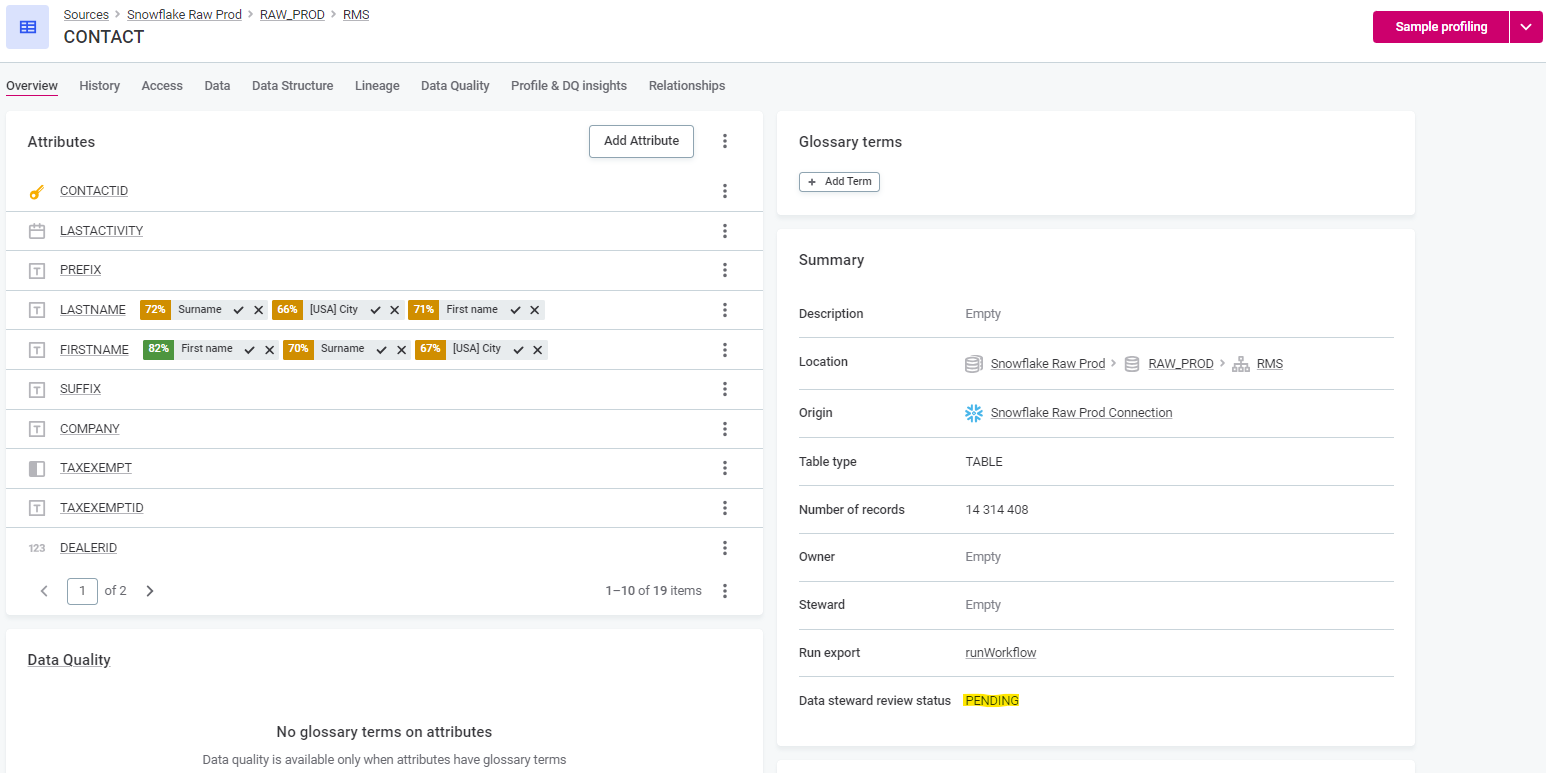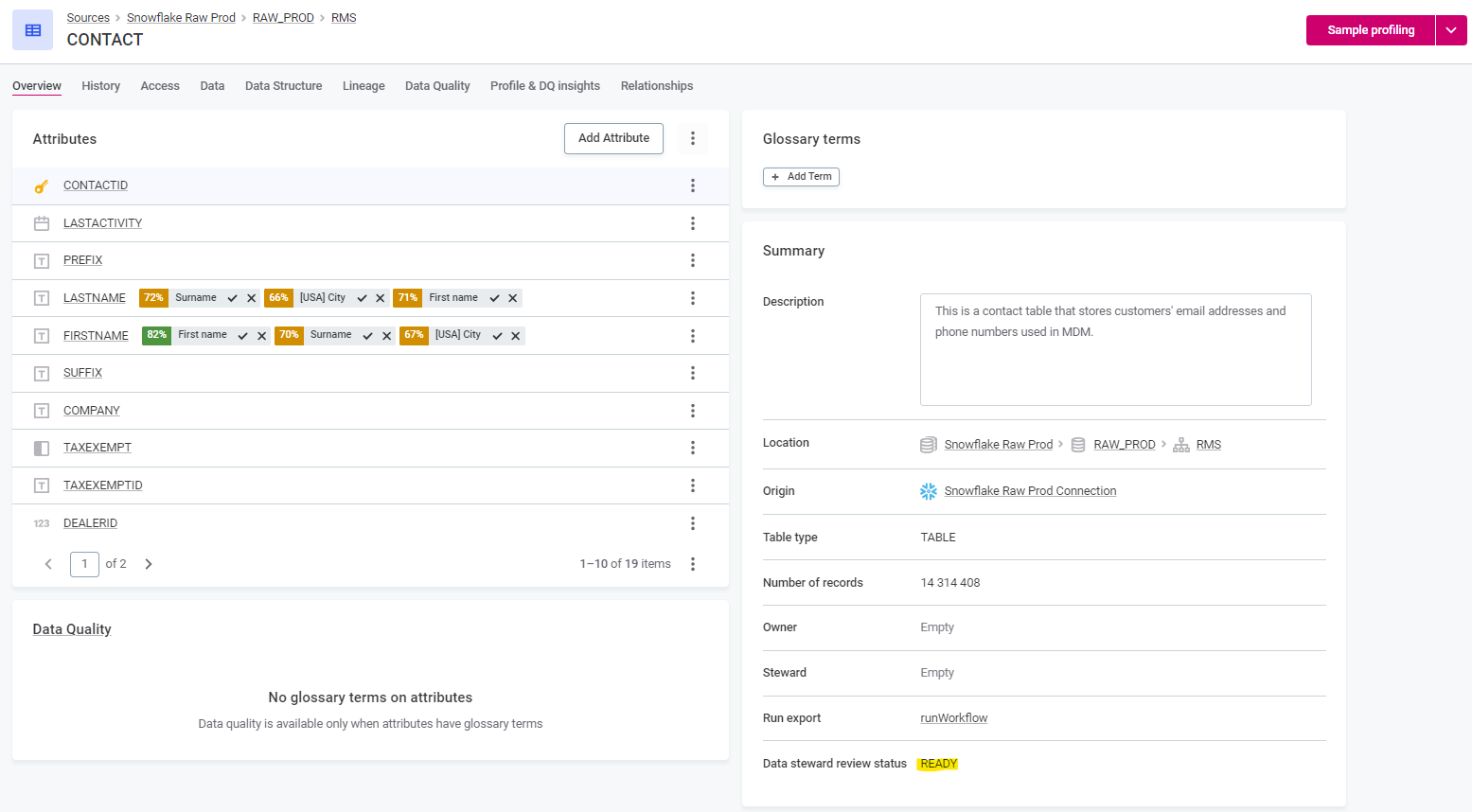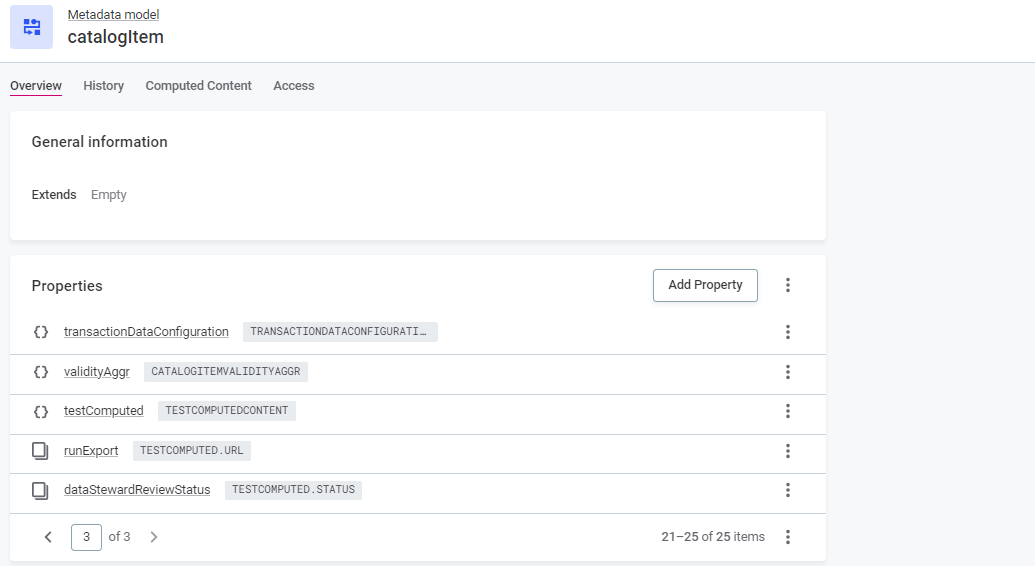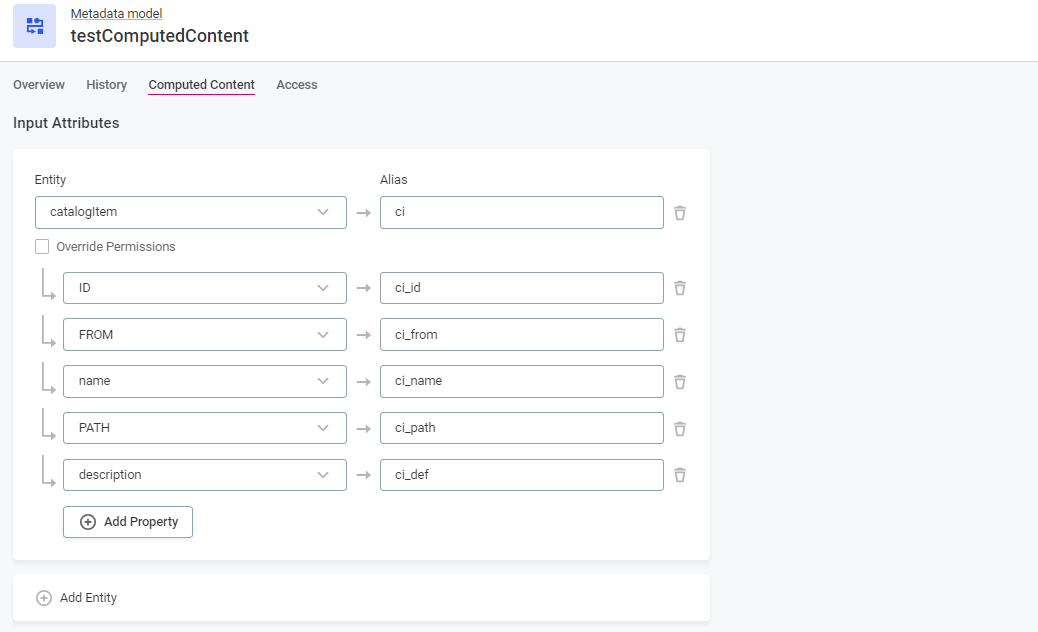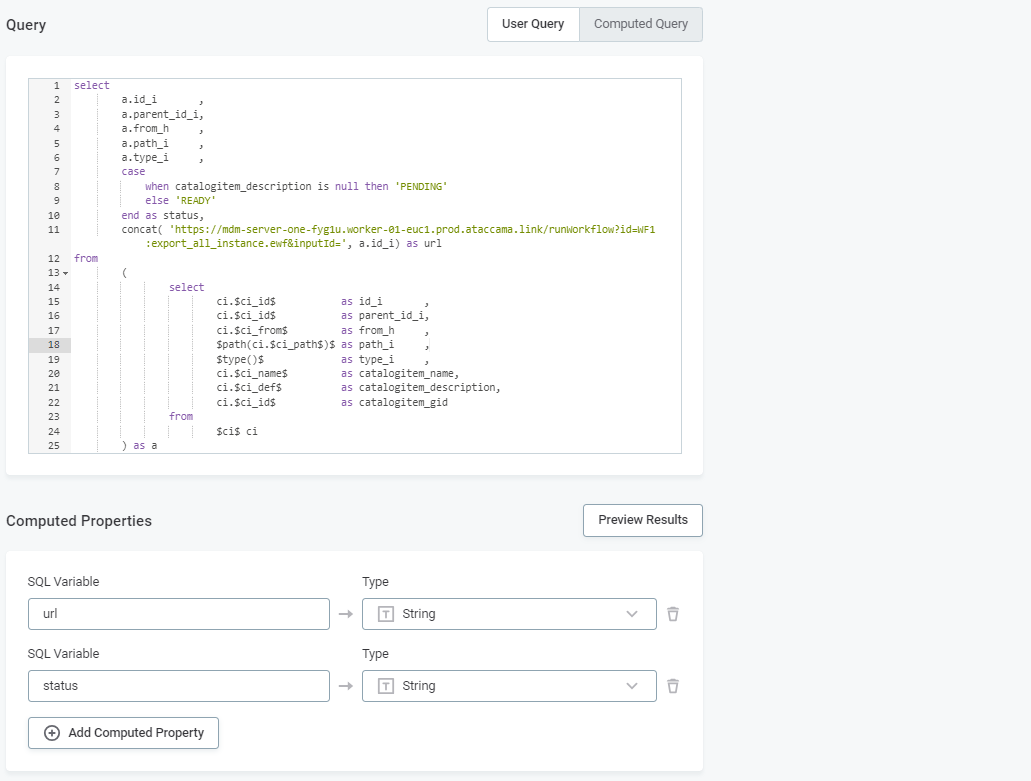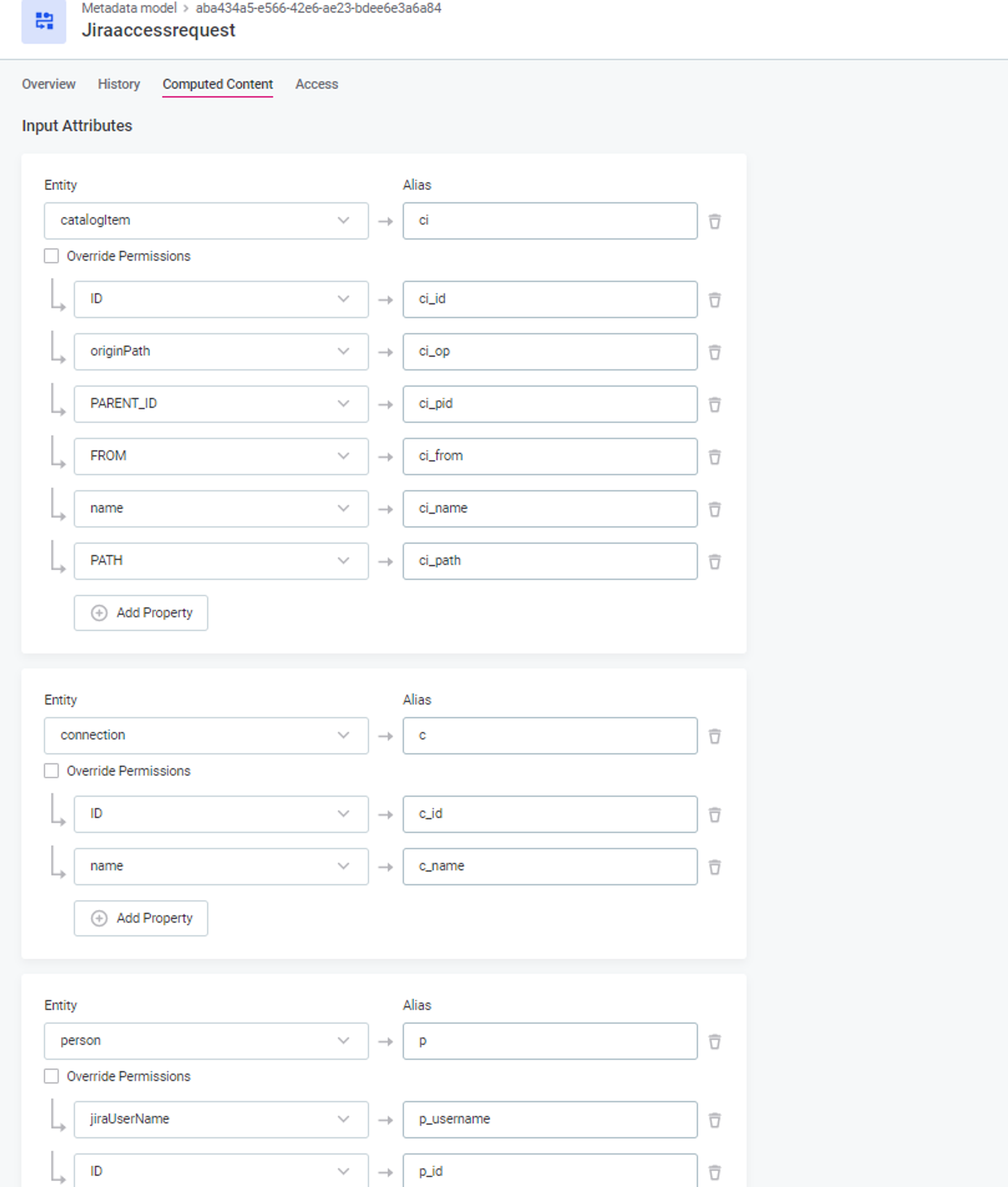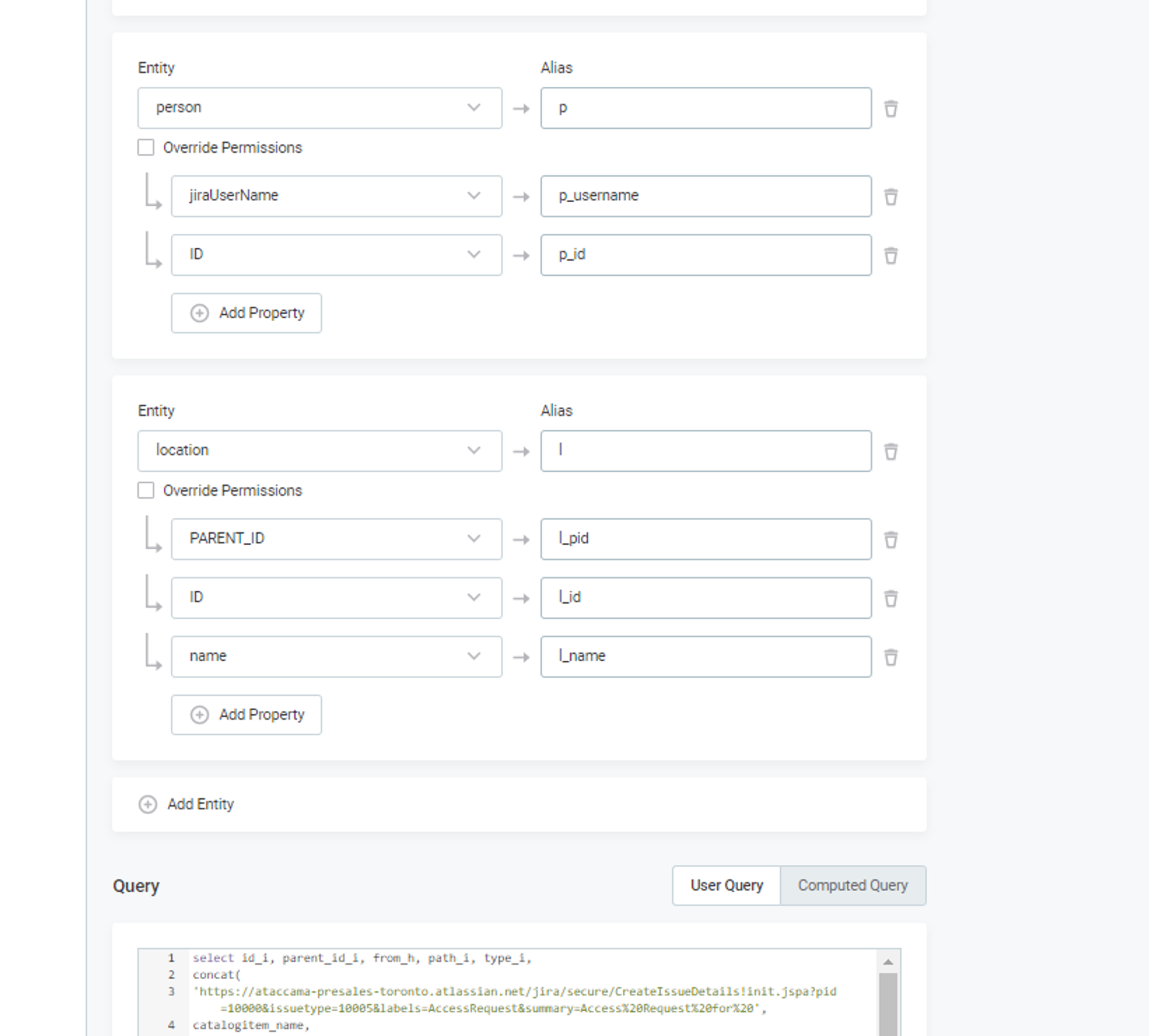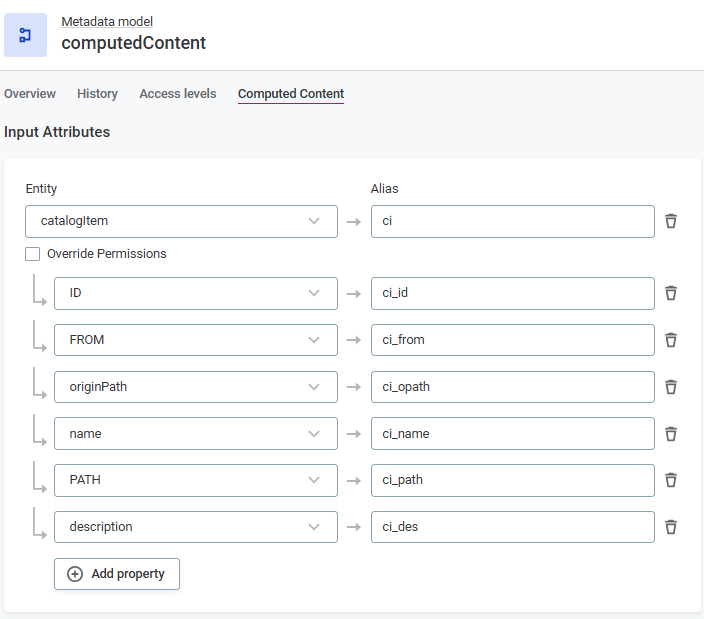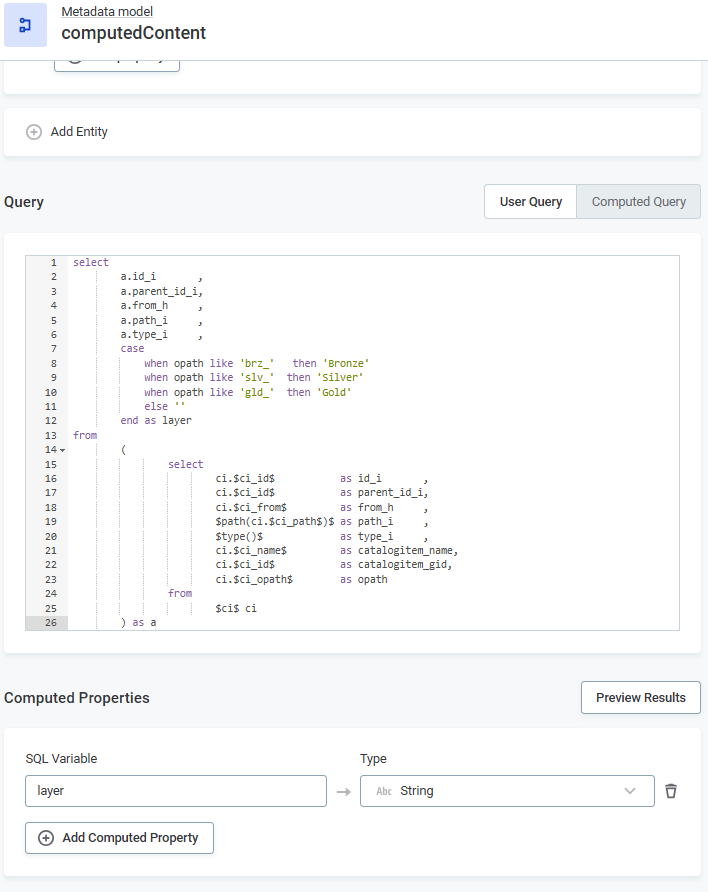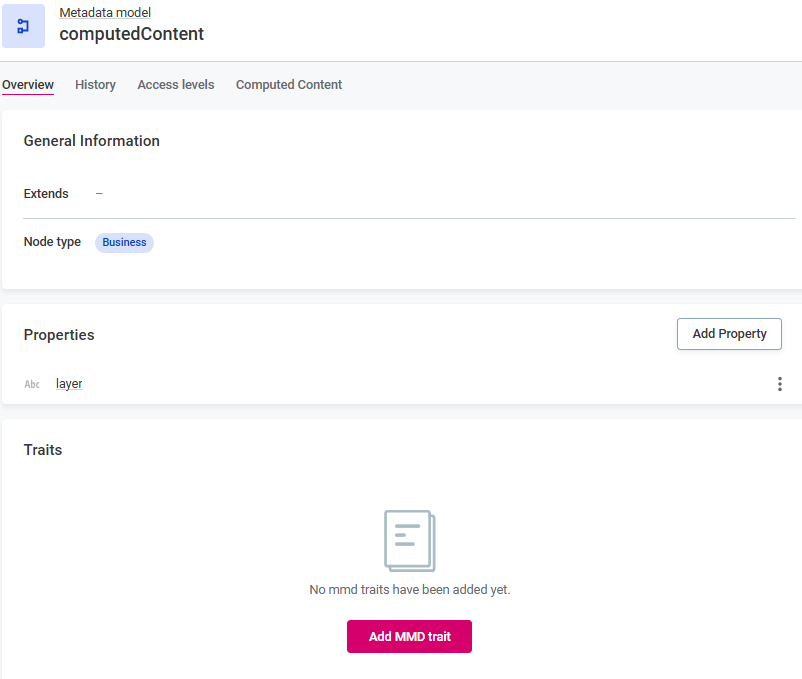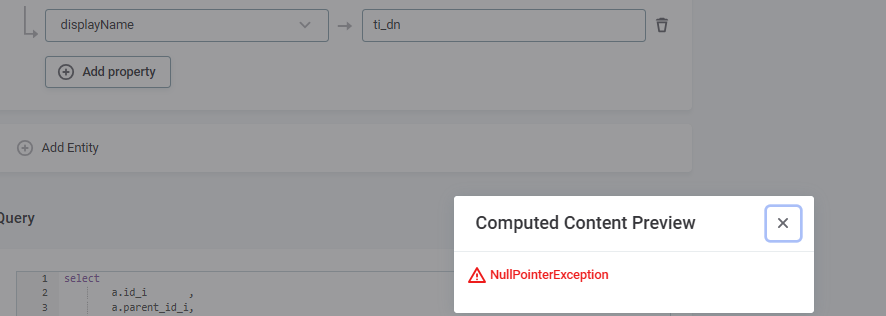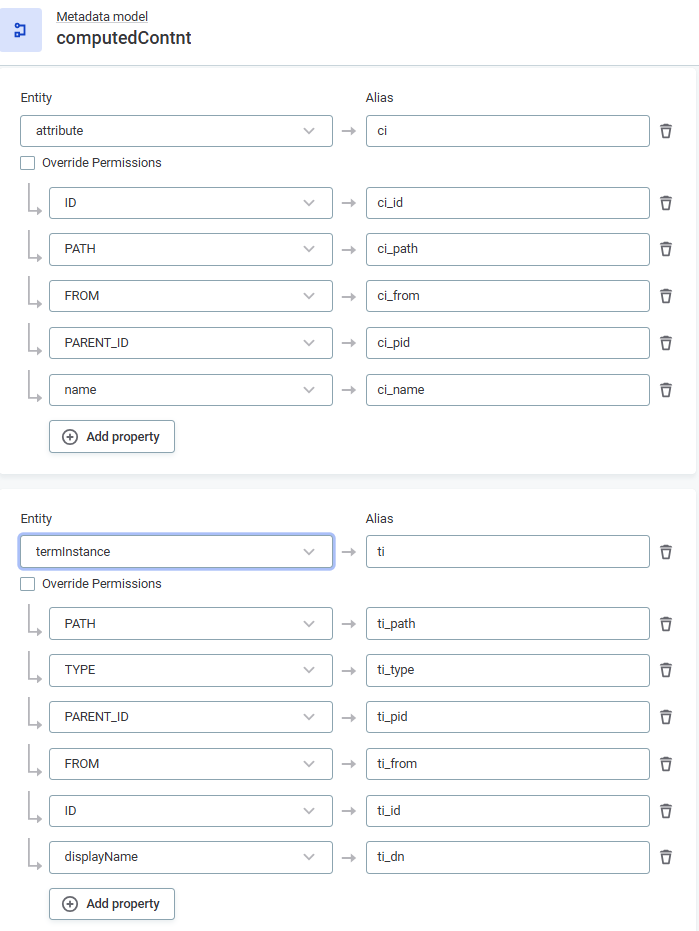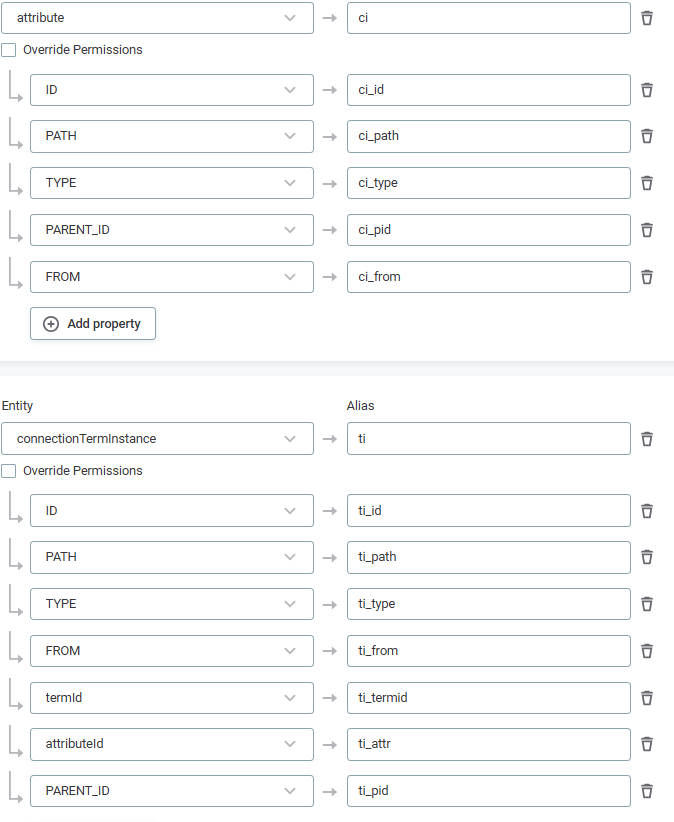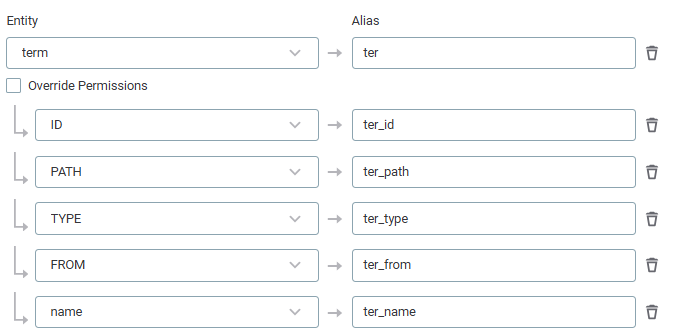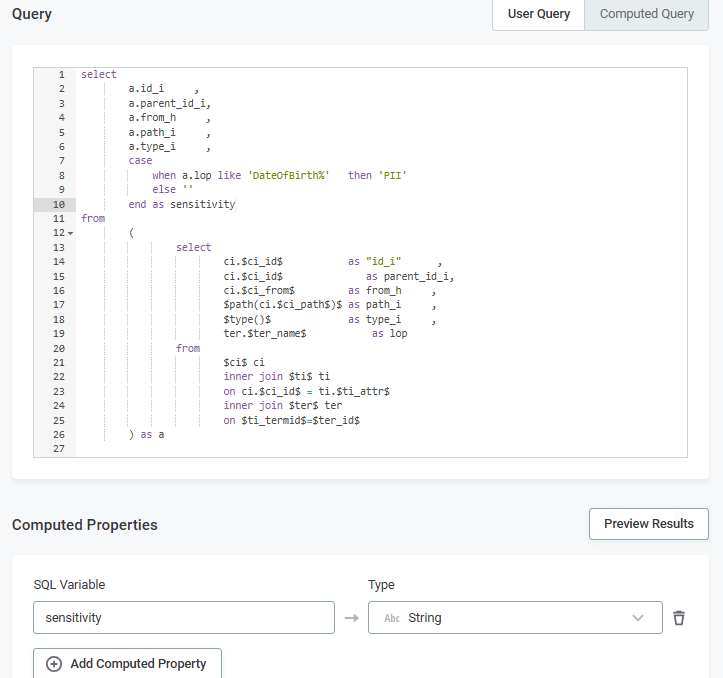Hi community,
We have a usecase to set a property's value automatically: based on several conditions that property gets a value. First we considered creating a desktop plan for this. Then we figured it would be preferrable to have this value set automatically, something that can possibly be accomplished by applying computed content.
We have used computed content before, mainly for concatenating values (like described in Computed Content: Show attribute values based on existing attributes (ataccama.com)). But in this case we would need to define a case statement to define the conditions and determine the value.
So the question is, does someone know if sql-like case stamenent can be implemented as computed content? And if so, can an example be provided?
Thanks for your attention and kind regards,
Albert




